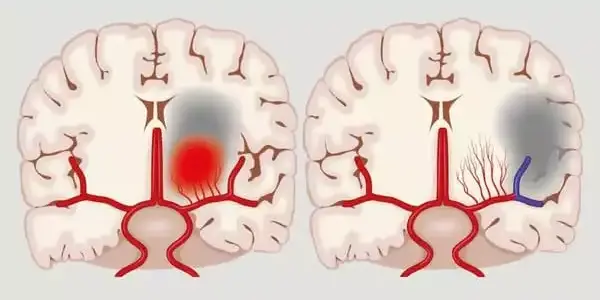There is a possible link between blood clot factors and migraine with aura, though the exact cause is unknown. A migraine headache with aura is characterized by visual disturbances, such as flashes of light or blind spots, before or during the headache phase. It is thought to be caused by a combination of genetic and environmental factors.
One of the proposed mechanisms for the link between blood clot factors and migraine with aura is cerebral ischemia. Cerebral ischemia is characterized by decreased blood flow to the brain, which can result in the formation of blood clots. According to some studies, people who have migraine with aura are more likely to have ischemic events such as strokes and transient ischemic attacks (mini-strokes).
Mendelian randomization, a technique in genetic analysis, was used to examine 12 coagulation measures, revealing four that are associated with migraine susceptibility.
Migraine affects nearly 15% of the population in the United States. Migraine with aura (MA) is a poorly understood subtype of migraine. Prior to the onset of their migraine headaches, people who suffer from MA frequently see flashing lights, blind spots, or jagged lines in their visual field. Individuals who have MA are also at a higher risk of stroke and cardiovascular disease, though scientists are still investigating why this is the case.
We’ve always wanted to know why people with MA have this higher risk of stroke and other cardiovascular diseases. This study offers promising leads specific to MA. Finding a possible cause for migraine with aura has been an outstanding question in the field for a long time.
Daniel Chasman
In a new study from Brigham and Women’s Hospital, researchers used a technique in genetic analysis termed Mendelian randomization to examine 12 coagulation measures, uncovering four that are associated with migraine susceptibility. Interestingly, scientists only observed these associations in individuals who experience MA and did not observe such associations among individuals who experience migraine without aura (MO). Their research suggests that these hemostatic factors could potentially have a causal role in MA. Their results are published in Neurology.
“We’ve always wanted to know why people with MA have this higher risk of stroke and other cardiovascular diseases,” said corresponding author Daniel Chasman, PhD, of the Division of Preventive Medicine at the Brigham. “This study offers promising leads specific to MA. Finding a possible cause for migraine with aura has been an outstanding question in the field for a long time.”
For some time, researchers have speculated about the relationship between coagulation and migraine susceptibility, but previous research has been largely inconclusive. Most people first get migraines when they are young, such as in childhood or early adulthood. Because previous study designs only included middle-aged and older adults, researchers have questioned whether coagulation causes migraine or whether there is any causality between these two elements at all. Using Mendelian randomization, which can support or refute potential causal effects on a health outcome, scientists discovered evidence for the first time that hemostatic factors may contribute to the risk of MA.

“Even if we see an association between migraine and these coagulation factors when we measure both in a population at the same time, we still wonder: Which one came first?” Pamela Rist, ScD, of the Brigham’s Division of Preventive Medicine, was a co-author. “One of the fascinating aspects of Mendelian randomization is the ability to investigate potential causality.”
The researchers used summary statistics from decades of previously collected data from migraine sufferers and non-migraine sufferers. Because the diagnostic criteria for MA and MO differ, they could investigate these two conditions separately.
The researchers discovered a strong link between four coagulation factors and migraine susceptibility. They discovered that genetically increased levels of three blood clotting factors, coagulation factor VIII, von Willebrand factor, and phosphorylated fibrinopeptide A, as well as genetically decreased levels of fibrinogen (a protein important in the late stages of the blood clotting process), were all linked to migraine susceptibility. Interestingly, scientists found no association between these hemostatic factors and migraine without aura (MO), indicating a specific relationship between these hemostatic factors and MA.
Mendelian randomization has limitations, according to scientists. Researchers could investigate whether the causal associations implied by genetics can be observed in clinical practice in the future.















